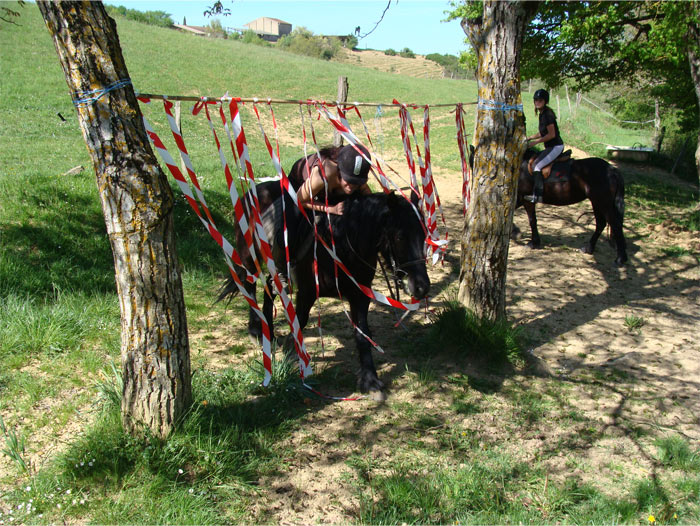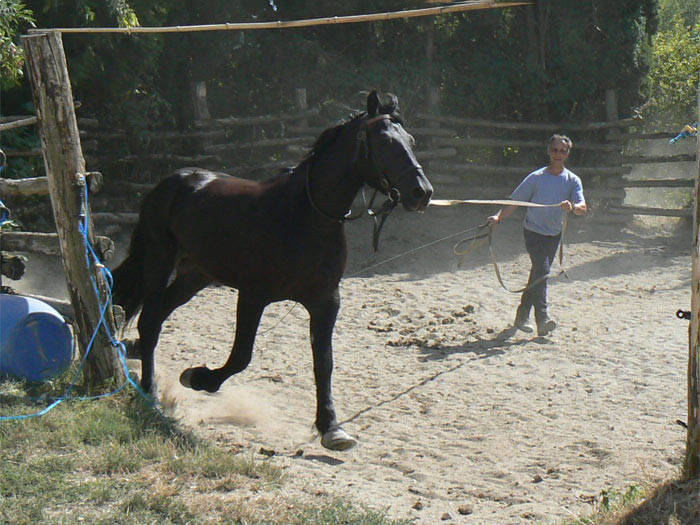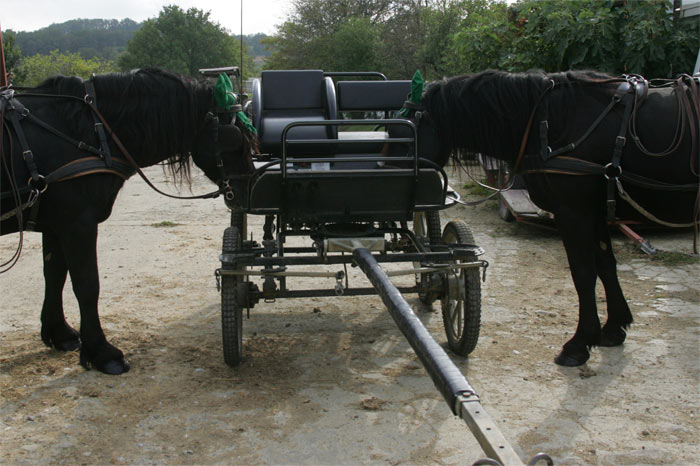Breaking in gently

Our system of breaking in horses is one of continuous education and training that starts at birth and continues until the day they are placed on the market. Colts and fillies are raised together in open air where they learn from the social life of the herd, its hierarchy and its play. In addition, they are brought together for regular training sessions. Here they acquire the foundations of their education and equitation. In principle, the sequence includes free work, lungeing in a ring, then lanyard work and activities with longer and longer reins. There is work on the flat, in the arena and then trips in the area and finally trips in harness in traffic.
All these phases of education are based on ethological principles. Thus, we observe the behaviour of the horse so that we can communicate better with it. We show respect to the horse and establish a rapport. Tasks are broken down into stages and reward and praise are central to the process.
Groups of foals are reared in the fields and brought in each morning to be tethered, groomed and to have their hooves picked up and cleaned. They are then released to work with the adult horses almost as part of a game. They take rides in a horse trailer, they turn, trot, change hands, stop, start, learn to move over obstacles with both a small saddle on their back and a halter.

The foals must be confident enough to allow their heads, flanks and the rest of their body to be touched without them showing any reluctance to be handled. Remember, the foal is not a toy, it must not be treated mindlessly rather one must be gentle but firm. Work must always be within the horse’s compass so as not to allow it to fail. We advance at the horse’s pace and the tasks are broken down as much as possible and adapted to the individual.
From 1 to 1 ½ years old the foals can have a human dummy on their back (blue overalls stuffed with hay). This is attached to the saddle. They continue to work in the ring on the three gaits where they are rewarded with hugs, encouragement and barley. Horses are free animals, they don’t need us to live. So if we are pleased by their work we should say thank-you.
At 2 years old the foals work freely, alone, with a saddle and a bridle in the ring on a longer rein and with a rider walking and trotting.

At 2 ½ to 3 years they are broken to the saddle and next to harness. They work mostly on long reins and with traction and noise behind them .They can first drag a small sled and finally a light cart on the road and in traffic.
The following should be noted:
- The importance of free working,
- Autonomous learning as our horses learn early to work alone in the ring or outside,
- Learning to stand still even when they are not tethered, this is one of the most basic safety rules in coaching.
Thanks to our selection and raising methods, our horses for sale are especially safe for trekking and driving because they are both energetic and calm .They excel at many disciplines: leisure riding, TREC, horse therapy, driving in harness, dressage, endurance and shows.







